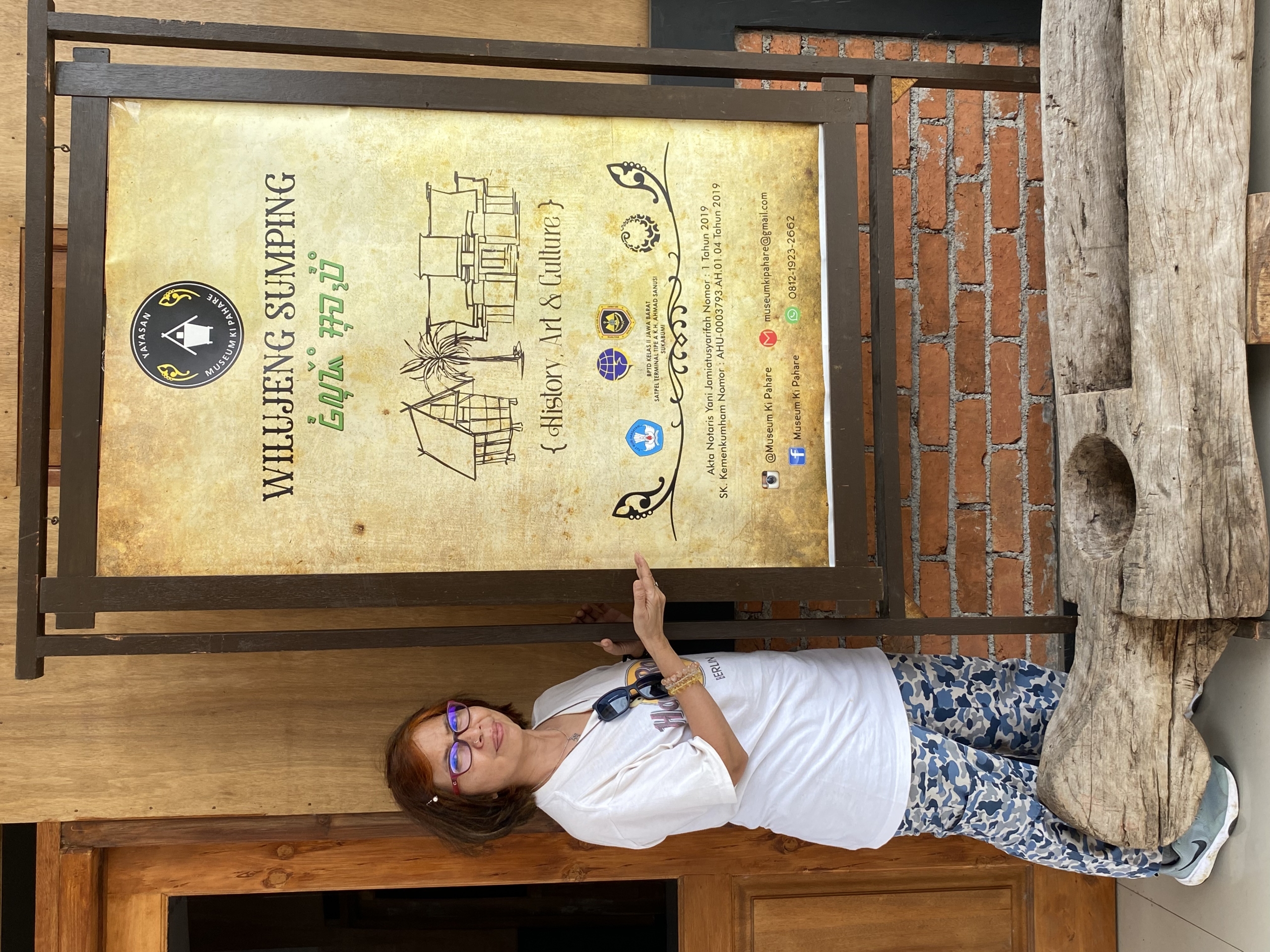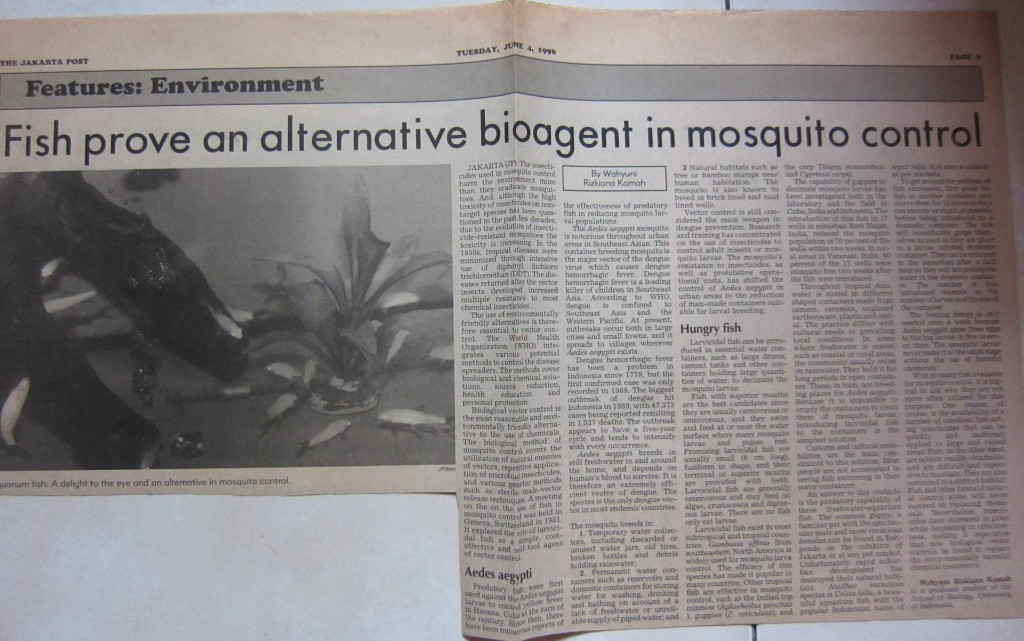I was a kind of impressed by Sukabumi – a small city located approximately 115 kilometers in the south of Jakarta. This 48-square kilometer city has several museums. One of them, Ki Pahare Museum, caught my attention. The Museum describes itself as a museum that houses prehistoric artifacts from the Sukabumi region in West Java.
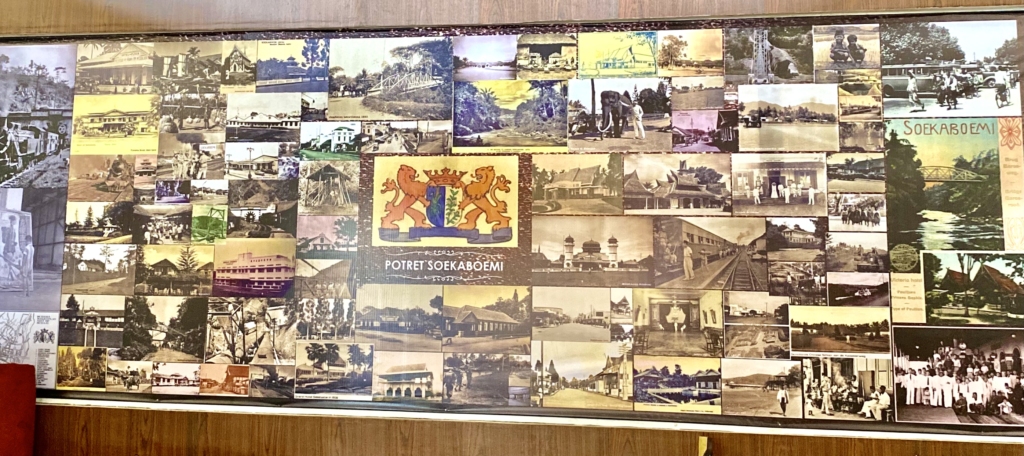
A Museum in a Residential House
I decided to go to Ki Pahare Museum by an online motorcycle taxi from the hotel I was staying. The address listed in the App. only mentioned Jalan Baros KM 5, without any specific number. Upon reaching Jalan Baros, I looked around to find a house with a sign indicating it was a museum. The motorcycle I was on stopped at a location presumed to be close to the museum. The shopkeeper I asked pointed to the opposite direction, saying, “On the roadside, near the automobile workshop.” The motorcycle driver turned towards the indicated point. But even there, I didn’t see a museum sign, just an unkempt empty house. “They’ve moved near the school,” replied a durian seller. He gave directions to the driver to the intended location. I got back on the motorcycle with curiosity, and we continued on our way.
Entering a fairly big road, I once again sharpened my eyes to look for the museum sign. A vendor we asked replied, “Behind the school, enter the alleyway.” I was even more curious as to why the Museum would be inside an alley. After a bit of circling around, the driver spotted the sign “Museum Ki Pahare” and followed that path.
I had to get off the motorcycle and walk through the alley because the museum indeed jutted inside. Arriving at the house’s yard, which looked like a residential home, I wondered, where the Museum is. I peered through the slightly open window while greeting the host. I couldn’t see anything inside; was this really Ki Pahare Museum? That question lingered in my mind.

Then, a middle-aged man and a woman came out. “Sampurasun,” I greeted them. “Rampes,” the man replied. “Is this the Museum Ki Pahare?” I asked him directly, a question that had been bothering me. Then, a conversation unfolded between us. It turned out that the Museum had been relocated. “It is inside the terminal,” the man said. I was even more confused, imagining the museum being inside a bus terminal. “My son is the one managing the Museum,” said the man while contacting his son over the phone. He wanted to ensure that his son was there because I would be visiting the museum shortly. The online motorcycle taxi driver then drove me there.
Approaching the terminal, I saw the Ki Pahare Museum sign on the building situated in its midst. The journey to find the Museum Ki Pahare had finally come to an end.
A young man welcomed me, he was indeed Sandi, the son of the man whose house I had visited earlier. “Welcome to Museum Ki Pahare,” he said with a smile. “Why hasn’t the address been updated in the app yet, Kang?” I bombarded him with questions immediately. “It’s already changed in the search engine,” I added. Kang Sandi apologized upon hearing my experience of searching for Ki Pahare Museum. He admitted that he didn’t know how to update the address in the app, and no one had done it yet.
Community-Based Museum
Ki Pahare Museum cannot be separated from Paguyuban (Association) Ki Pahare, a community in Sukabumi aimed at preserving cultural heritage.
In carrying out its mission, the Ki Pahare Association is active in various activities, including being part of the research team conducted by the West Java Archaeological Office, reviving various Sundanese traditional ceremonies, observing and documenting cultural heritage objects, as well as studying local history derived from ancient teachings of the Sundanese ancestors, folklore, and ancient manuscripts. The association, now called the Ki Pahare Foundation, was established on August 25, 2016, with Sandi Samba Wijaya, 42, as its chairman. The Ki Pahare Foundation is often invited to be a resource in cultural activities and tourism development in West Java.

In an effort to preserve Sundanese culture, Sandi and his colleagues establish a network by involving not only communities in the cultural field but also across sectors, such as the largest community in Sukabumi, the Sukabumi Automotive Community. “Cultural preservation must involve all layers of society, they must be part of it,” explained Sandi, who is also a resident of Kasepuhan Ciptagelar, Sukabumi. Currently, there are already 20 communities involved.
Ki Pahare Museum is the only community-based museum in West Java and receives direct supervision from the West Java Archaeological Office.
The First Museum at the Bus Terminal
Sandi, who teaches Sundanese language at an elementary school in Sukabumi, recounts the touching journey of the Museum.
When inaugurated on April 25, 2017 by the Mayor of Sukabumi, Ki Pahare Museum occupied a building owned by the local government (Baros Subdistrict Library) on Jalan Raya Baros Km.5. Ki Pahare Museum then became the forefront center for information, cultural preservation, and education about Sundanese cultural heritage, especially in Sukabumi, attracting visitors from various backgrounds. However, in 2021, they had to vacate as the building would be reused by its owner. What a pity!
Sandi then borrowed his parents’ residential house located on Jalan Garuda, Baros Subdistrict–the one that I visited–, to be used as a museum from 2022 to 2023, after undergoing renovations. “Only some items were put on display,” Sandi answered when I asked how so many items could be exhibited in a residential house.
However, an interesting coincidence happened in the early 2023. The Head of Terminal A K.H. Ahmad Sanusi in Sukabumi City, who was interested in culture, was invited to participate in the ceremony of cleaning heritage items at Ki Pahare Museum. Upon seeing the condition of the Museum, he told Sandi to submit a request to the Directorate General of Land Transportation at the central office to use a building at Terminal A K.H. Ahmad Sanusi as a museum exhibition space. The request was granted, and Sandi was invited to meet the official. Coincidentally, the official had just returned from South Korea, where there is a bus terminal with a gallery. He was inspired by it. Thus, Ki Pahare Museum became a pilot project as the first museum in Indonesia located in a bus terminal. The Ki Pahare Foundation obtained the right to use the building with specific conditions.
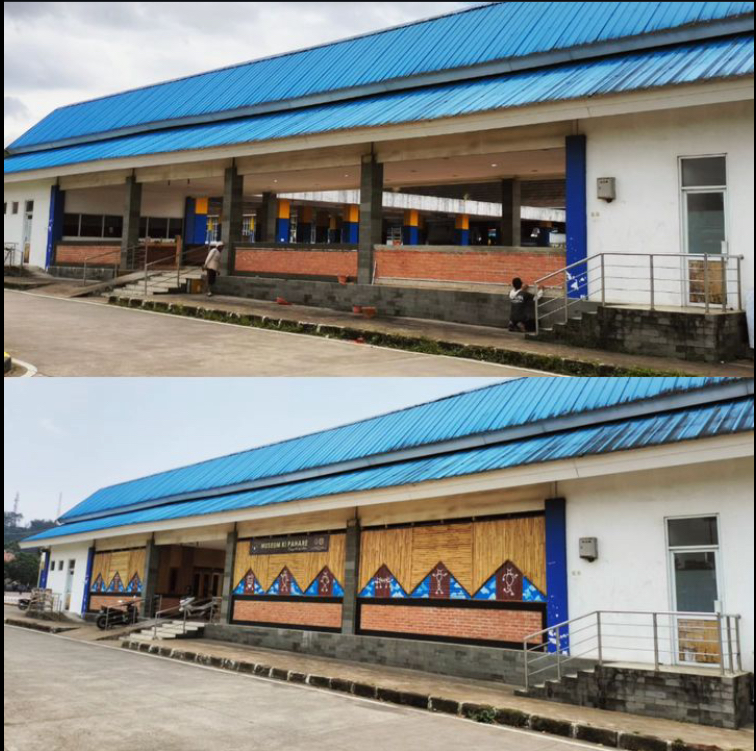
The building currently used as the museum exhibition space was previously a semi-open ticket sales area. There are two sides of the space, but only one side was renovated and transformed into an exhibition space after being sealed off and decorated. Ki Pahare Museum at Terminal A K.H. Ahmad Sanusi was reopened to the public on October 1, 2023.
Voluntary Spirit
The name Ki Pahare comes from the name of a tree also known as paku jajar and suci domas. The Ki Pahare plant is known by the Sundanese indigenous people and is a symbol of the Pajajaran Kingdom alongside the Kujang, a traditional weapon. Additionally, Ki Pahare is one of the sacred trees.

The Museum’s collection includes artifacts and sculptures, lingga stones, traditional weapons, ancient coins, displays of traditional Sundanese kitchens along with their kitchen wares, and reproductions of colonial-era photos. The arrangement of the Museum’s collection appears quite organized. Almost every item has a description. “Heirlooms such as kerises, machetes, or spears are entrusted or gifted by the community; ancient relics are the result of discoveries or excavations, while documents come from the community,” said Sandi, who received the Cultural Activist Award in Sukabumi City in 2023. “There are also documents contributed by individuals from the Netherlands and France whose ancestors once lived in Sukabumi as missionaries and compilers of a Sundanese language dictionary,” he added.
The management of the Ki Pahare Museum is carried out with a voluntary and communal spirit. For example, the creation of descriptions for discovered artifacts is assisted voluntarily by a final year archaeology student from the University of Indonesia. “He offered to help the Museum, conduct inventory, measure, create descriptions, and label the discovered items,” said Sandi. For academic purposes, the Museum is supported by the West Java Archaeological Office.
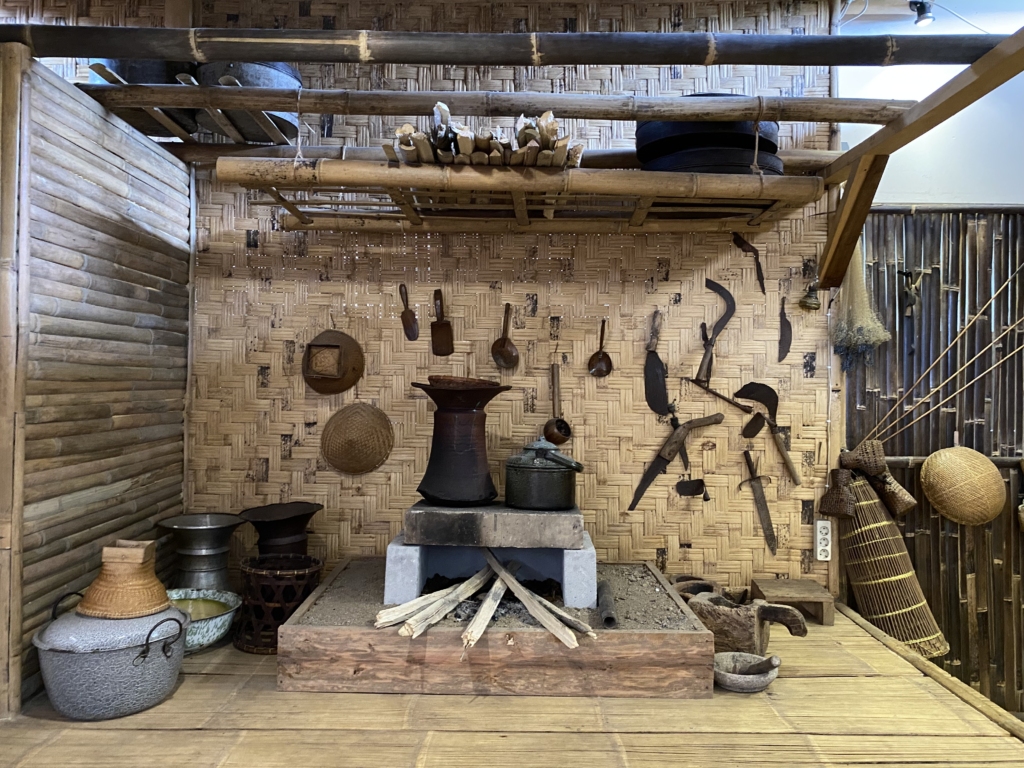
A lack of fixed funding has made Sandi and his friends creative in organizing the Museum. Some display racks in the exhibition space are re-polished leftover items. “The Museum’s operational costs come from donors, management, and profits from our small business activities,” said Sandi, who can talk at length about Sundanese history and culture. To raise funds, Sandi usually organizes collective contributions during Museum’s cultural events.
On a daily basis, the Ki Pahare Museum is managed by four people who take turns. If one is busy, another takes over. They do so willingly. Why not charge minimal fees for visitors? “We are not ready to impose entry fees yet. According to our Ancestors, visitors should not be subject to Museum charges, it should always be free of charge,” answered Sandi humbly. However, the Museum provides a donation box for visitors who wish to contribute.

Sandi and his friends still have much work to do to realize a modern yet local-themed Ki Pahare Museum. “We still need around IDR 40 million (to improve the exhibition space),” said Sandi. Their dream is to make the Ki Pahare Museum a center for information, preservation, and learning about Sundanese culture in particular.
Museum Location: Komplek Terminal Tipe A K.H. Ahmad Sanusi, Sudajaya Hilir, Kecamatan Baros, Kota Sukabumi.
Information for visiting: 0812-1923-2662 (WA)
